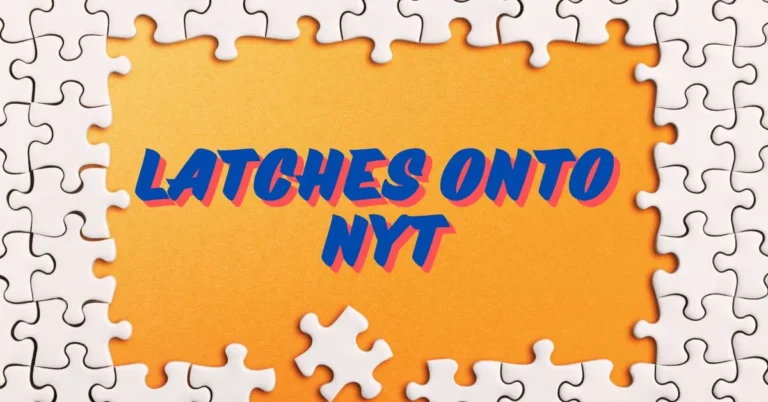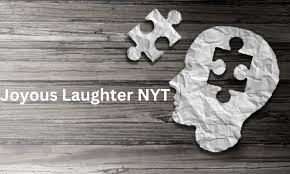Unpacking “Absolute Junk Nyt” in Crossword Puzzles: The NYT’s Clever Wordplay
Crossword puzzles have always been a delightful challenge for language lovers, with their clever clues and ever-expanding pool of potential answers. One phrase that often catches solvers off guard is “Absolute Junk Nyt,” especially when it appears in a high-profile crossword puzzle like those in The New York Times (NYT). This particular clue invites solvers to look beyond the surface and think creatively, often leading to unexpected solutions. So, what does “Absolute Junk Nyt” really mean in this context, and why does it push solvers to dig deeper into their vocabulary? Let’s explore how crossword puzzles, and specifically NYT puzzles, play with language, guiding solvers toward answers that are both challenging and rewarding.
The Puzzle
In the world of crossword puzzles, clues are more than just hints to find a word—they are riddles in themselves. Take, for instance, the clue “Absolute Junk Nyt.” To many, this might suggest obvious answers like “trash,” “garbage,” or “waste,” but crossword clues often demand a stretch of the imagination. Solvers know to look for different meanings, possible puns, or even less common terms to solve the puzzle. When encountering “Absolute Junk Nyt,” the challenge lies in considering how the word “junk” might appear in unconventional forms or as part of an idiomatic phrase.
For example, the answer could be “junk” in a more figurative sense—something worthless, perhaps “clutter” or even “dross.” Alternatively, the solver might have to think of a synonym that fits the exact number of squares on the crossword grid, leading to an answer like “scrap” or “rubbish.” In this way, crossword puzzles like those found in the NYT encourage solvers to think beyond everyday language and familiarize themselves with a broader spectrum of words, often stretching our definitions and expectations of common phrases.
Creative Interpretation
What makes crossword puzzles such a fascinating mental exercise is the way they require solvers to consider multiple interpretations of a single clue. The phrase “Absolute Junk Nyt” may not always lead to the most straightforward answer. Often, a term like “junk” may not refer to literal refuse, but rather something abstract or obscure. This is especially true in more challenging puzzles, such as those published in The New York Times. The editors and constructors of these puzzles are known for their creativity and their ability to keep solvers on their toes, pushing them to consider unusual associations, historical references, and uncommon idiomatic expressions.
In the case of “Absolute Junk Nyt,” it’s important for solvers to consider both the literal and figurative meanings of the word “junk.” While “garbage” or “rubbish” might come to mind first, the crossword constructor could be asking for a less common term—perhaps something related to value or worth, as seen in terms like “dross” (refuse or waste material) or “scrap” (a small piece of something that is no longer useful). The word “junk” itself may also be used in conjunction with other words to form a compound phrase like “junk mail,” which, while less literal, still fits the puzzle’s goal of challenging solvers with more obscure associations.
Language Play in Crosswords
Crossword clues are full of wordplay, and the more solvers engage with them, the more they begin to notice patterns in how language is twisted, turned, and reinterpreted. The New York Times crossword, in particular, often leans into creative wordplay and clever clue constructions that force solvers to stretch their vocabulary. A clue like “Absolute Junk Nyt” may appear simple, but it requires a deeper understanding of the nuances of language, including slang, idioms, and even archaic or esoteric terms. Solvers quickly learn that crossword clues are rarely literal; instead, they often challenge the solver’s cultural knowledge, historical context, and linguistic flexibility.
For example, consider how the term “junk” could be reinterpreted. While the casual meaning of junk may invoke images of discarded items or refuse, in a crossword puzzle, it may also refer to “junk bonds” (high-risk financial instruments) or even “junk science” (pseudoscience). These varied meanings show how versatile the term “junk” can be, shifting from a simple piece of waste to a specialized term used in other contexts. By recognizing these alternate meanings, solvers can better approach puzzles with a critical eye and develop strategies to decipher tricky clues.
Clue Structuring
An essential aspect of crossword puzzles is their meticulous construction. Every clue, no matter how simple or complex, is carefully crafted to fit the grid and provide a satisfying solution. Crossword constructors often play with word length and ambiguity, allowing for multiple valid answers to a single clue. This is where clues like “Absolute Junk Nyt” shine: there are a variety of possible answers, each offering a slightly different perspective on what constitutes “junk.”
For example, some solvers may gravitate toward “trash,” a common term for something discarded. Others might choose “dross,” which connotes a worthless byproduct or something of little value. Still, others could think of “scrap,” a term that implies pieces of something left behind but not entirely discarded. The diversity in potential answers shows how crossword puzzles allow solvers to think creatively and flexibly. It’s not just about finding a single solution; it’s about exploring the range of possibilities and considering how language can shift in different contexts.
Challenging Your Vocabulary
One of the most rewarding aspects of solving puzzles like those in The New York Times is the opportunity to expand one’s vocabulary. Each puzzle offers a mini lesson in words, language, and their various uses in different settings. When a solver encounters the clue “Absolute Junk Nyt,” it might prompt them to explore synonyms, antonyms, and variations that they wouldn’t typically consider. For example, the word “junk” could lead to an exploration of related terms like “refuse,” “debris,” “trash,” or “garbage,” but it could also spark curiosity about more obscure words such as “dross,” “clutter,” or “detritus.”
This process of learning new words and phrases is a key reason why crossword puzzles are so popular among language enthusiasts and casual solvers alike. Each puzzle provides a fresh opportunity to test your knowledge of language and learn something new. Whether you’re solving on your own or discussing clues with friends, crossword puzzles stimulate the mind and offer a continual challenge that keeps solvers coming back for more.
The NYT Puzzle Tradition
The New York Times crossword has a long-standing tradition of challenging solvers and pushing the boundaries of what a crossword puzzle can be. Over the years, the puzzle has evolved from simple word games into intricate challenges that test solvers’ wit, knowledge, and linguistic prowess. As crossword constructors become more experimental, they introduce clever clues and wordplay like the “Absolute Junk Nyt” clue, which invites solvers to explore unconventional answers and interpretations. The NYT crossword stands out for its ability to maintain a delicate balance between accessibility and challenge, catering to both casual solvers and expert enthusiasts alike.
The Puzzle Experience
For many solvers, crossword puzzles are more than just a pastime; they are an intellectual pursuit that offers a deep sense of satisfaction upon completion. The experience of solving a particularly tricky clue, like “Absolute Junk Nyt,” is both humbling and rewarding. It’s a reminder that language is flexible, ever-evolving, and full of surprises. Whether you’re a seasoned crossword expert or just starting out, each puzzle provides an opportunity to sharpen your skills, expand your vocabulary, and connect with others who share the same passion for wordplay.
Conclusion
“Absolute Junk Nyt” in a crossword puzzle may seem like a straightforward clue, but as we’ve seen, it offers a window into the rich, multifaceted world of language. Through clever wordplay, creative clue structuring, and the flexibility of the English language, crossword puzzles encourage solvers to think critically, expand their vocabulary, and explore the many meanings of familiar words. The NYT crossword, in particular, stands as a beacon of linguistic innovation, challenging solvers to reach for new words and ideas with each clue. So next time you encounter a clue like “Absolute Junk Nyt,” remember that there’s more to the answer than meets the eye, and the joy of solving lies in uncovering the hidden layers of meaning within the puzzle’s clues.






